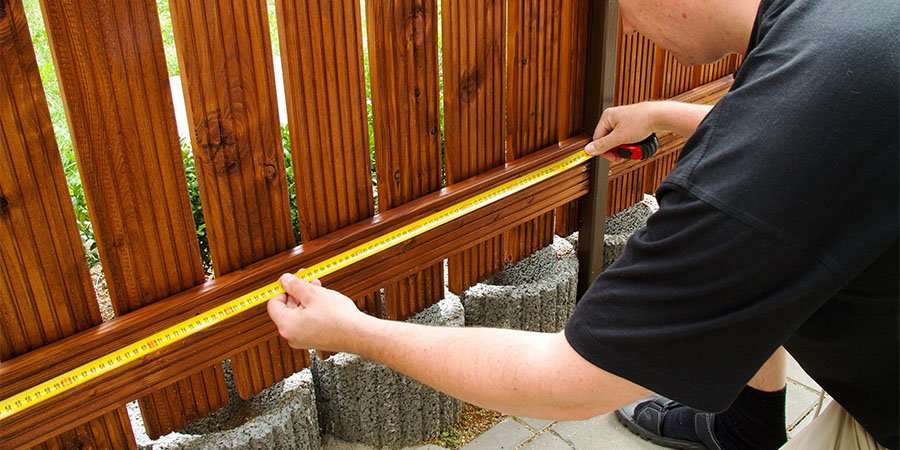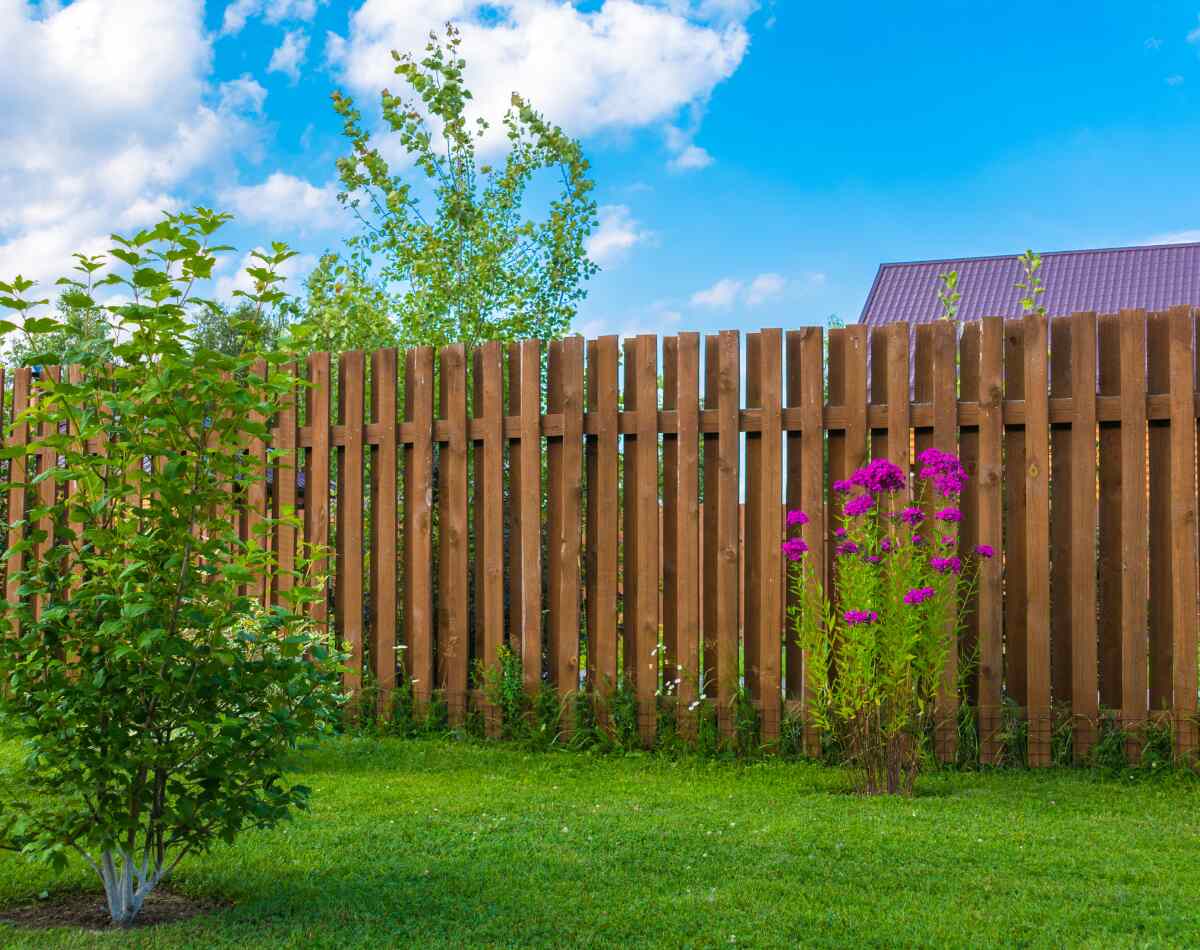All Categories
Featured
Mounting a fencing on your residential or commercial property can include privacy, safety, and aesthetic appeal, however before you start excavating holes and setting posts, it's crucial to understand whether you require a license. Not acquiring the necessary licenses might result in penalties or the requirement to eliminate the fence.
Why Are Allows Needed for Fencing Installation? Licenses are necessary for making certain that your fencing abides by local zoning laws and building codes. These regulations help make sure the security of your property and the bordering location. Furthermore, permits avoid conflicts with neighbors or neighborhood authorities, particularly when it pertains to building lines, height limitations, and overall layout.
In several instances, regional authorities call for permits to regulate things like presence at junctions or the proximity of a fencing to public rooms like roads or sidewalks. Permits also aid ensure that fencings are set up appropriately and securely, specifically when it involves one-of-a-kind products or high fencings.
Usual Kinds Of Permits for Fence Installation. The kind of fence you intend to install and your area will determine which licenses are called for. Below are the most usual types:
Building Authorization. A structure permit is normally needed for fencings that surpass particular height restrictions (frequently over 6 feet), are located near a public road or pathway, or are made from specific products. Structure permits guarantee that the structure fulfills neighborhood building ordinance, consisting of safety and security standards.
Zoning License. Zoning licenses are commonly called for to guarantee that your fencing abides by local zoning regulations. Zoning legislations can specify where a fence can be positioned on your home (e.g., along residential or commercial property lines or ahead yards), in addition to set limits on fence elevation. These laws are designed to avoid obstructions that might affect web traffic safety or community aesthetics.
![]()
Obstacle Permit. In some areas, you might need a setback permit to place your fence a specific range from residential or commercial property roadways, utilities, or lines. Problems are planned to maintain correct space in between frameworks and home limits, reducing potential disputes with next-door neighbors or public framework.
Homeowners Association (HOA) Authorization. If your building becomes part of a community governed by a Homeowners Association (HOA), you will likely need approval from the HOA before setting up a fence. HOA guidelines frequently govern the style, elevation, products, and also shade of fencings, making sure that they match the overall aesthetic of the community.
The Process for Getting a Fencing License. To obtain a fence authorization, you typically require to call your local city or region office. A lot of locations have a building division or planning workplace where you can use for authorizations. The procedure entails finishing an application and supplying detailed info regarding your suggested fence, including:
Fence design (products, elevation, style) Place on the home. Residential or commercial property line details (for accurate positioning) In most cases, a site strategy showing the proposed fence's position will certainly be needed. You might additionally require to pay a license charge, which can vary based on area and the complexity of the task.
As soon as you submit your application, the regional authorities will certainly evaluate it to make certain the fencing follows regional policies. Relying on your area, you may additionally need to permit or schedule an inspection for a property study.
When Do You Not Required a Permit? In some instances, an authorization may not be needed. Usually, you could not require a permit if:
![]()
The fencing is under a particular elevation (typically 3-4 feet for front yards) You're changing an existing fence with the very same kind and height. The fence is short-lived (such as a yard fence) However, it's always a great concept to get in touch with your regional structure or zoning department to confirm the needs, as rules can differ.
Consequences of Not Getting a Permit. In some instances, you might need to re-install the fencing according to code, which can be costly and taxing. In addition, not adhering to the appropriate permitting process can develop troubles with next-door neighbors, especially if your fence prolongs beyond your residential property line or doesn't meet elevation or layout needs.
Conclusion. Before setting up a fence, make certain you're aware of the local laws and whether you need an authorization. By obtaining the appropriate licenses, you'll make sure that your fencing is legally certified, safe, and cost-free from future difficulties.
Why Are Allows Needed for Fencing Installation? Licenses are necessary for making certain that your fencing abides by local zoning laws and building codes. These regulations help make sure the security of your property and the bordering location. Furthermore, permits avoid conflicts with neighbors or neighborhood authorities, particularly when it pertains to building lines, height limitations, and overall layout.
In several instances, regional authorities call for permits to regulate things like presence at junctions or the proximity of a fencing to public rooms like roads or sidewalks. Permits also aid ensure that fencings are set up appropriately and securely, specifically when it involves one-of-a-kind products or high fencings.
Usual Kinds Of Permits for Fence Installation. The kind of fence you intend to install and your area will determine which licenses are called for. Below are the most usual types:
Building Authorization. A structure permit is normally needed for fencings that surpass particular height restrictions (frequently over 6 feet), are located near a public road or pathway, or are made from specific products. Structure permits guarantee that the structure fulfills neighborhood building ordinance, consisting of safety and security standards.
Zoning License. Zoning licenses are commonly called for to guarantee that your fencing abides by local zoning regulations. Zoning legislations can specify where a fence can be positioned on your home (e.g., along residential or commercial property lines or ahead yards), in addition to set limits on fence elevation. These laws are designed to avoid obstructions that might affect web traffic safety or community aesthetics.

Obstacle Permit. In some areas, you might need a setback permit to place your fence a specific range from residential or commercial property roadways, utilities, or lines. Problems are planned to maintain correct space in between frameworks and home limits, reducing potential disputes with next-door neighbors or public framework.
Homeowners Association (HOA) Authorization. If your building becomes part of a community governed by a Homeowners Association (HOA), you will likely need approval from the HOA before setting up a fence. HOA guidelines frequently govern the style, elevation, products, and also shade of fencings, making sure that they match the overall aesthetic of the community.
The Process for Getting a Fencing License. To obtain a fence authorization, you typically require to call your local city or region office. A lot of locations have a building division or planning workplace where you can use for authorizations. The procedure entails finishing an application and supplying detailed info regarding your suggested fence, including:
Fence design (products, elevation, style) Place on the home. Residential or commercial property line details (for accurate positioning) In most cases, a site strategy showing the proposed fence's position will certainly be needed. You might additionally require to pay a license charge, which can vary based on area and the complexity of the task.
As soon as you submit your application, the regional authorities will certainly evaluate it to make certain the fencing follows regional policies. Relying on your area, you may additionally need to permit or schedule an inspection for a property study.
When Do You Not Required a Permit? In some instances, an authorization may not be needed. Usually, you could not require a permit if:

The fencing is under a particular elevation (typically 3-4 feet for front yards) You're changing an existing fence with the very same kind and height. The fence is short-lived (such as a yard fence) However, it's always a great concept to get in touch with your regional structure or zoning department to confirm the needs, as rules can differ.
Consequences of Not Getting a Permit. In some instances, you might need to re-install the fencing according to code, which can be costly and taxing. In addition, not adhering to the appropriate permitting process can develop troubles with next-door neighbors, especially if your fence prolongs beyond your residential property line or doesn't meet elevation or layout needs.
Conclusion. Before setting up a fence, make certain you're aware of the local laws and whether you need an authorization. By obtaining the appropriate licenses, you'll make sure that your fencing is legally certified, safe, and cost-free from future difficulties.
Latest Posts
Check Out the Best Auto Repair Discounts in Montclare, Chicago
Published May 27, 25
1 min read
Why Chicago Drivers Select Montclare Auto Repair for Reliable Service and Significant Savings
Published May 26, 25
1 min read
Find Out How WyHy Federal Credit Union Saves You Money on Loans and Savings
Published May 25, 25
1 min read
More
Latest Posts
Check Out the Best Auto Repair Discounts in Montclare, Chicago
Published May 27, 25
1 min read
Why Chicago Drivers Select Montclare Auto Repair for Reliable Service and Significant Savings
Published May 26, 25
1 min read
Find Out How WyHy Federal Credit Union Saves You Money on Loans and Savings
Published May 25, 25
1 min read